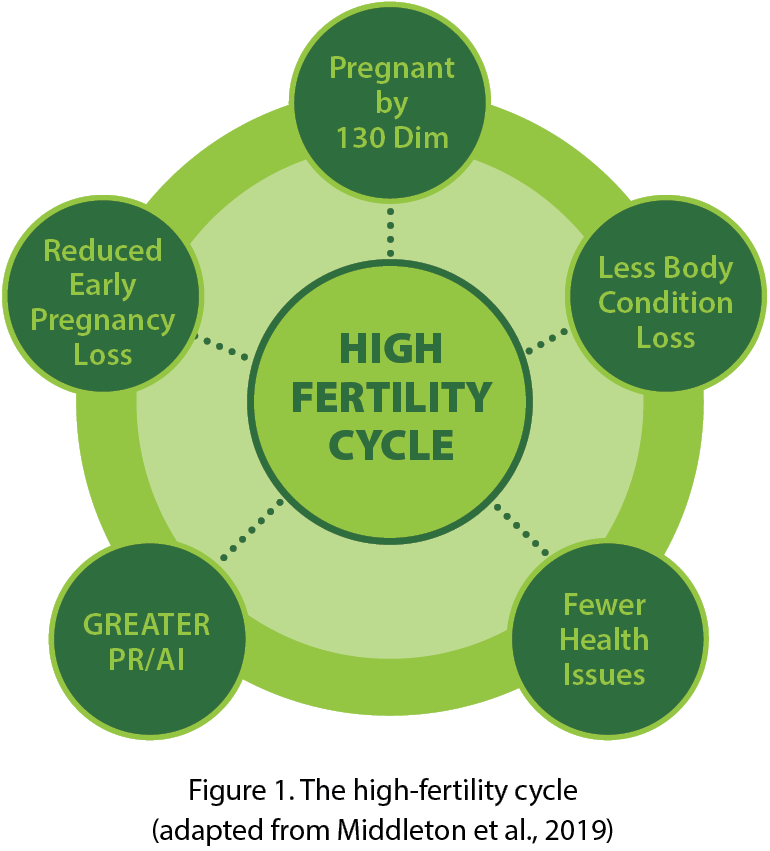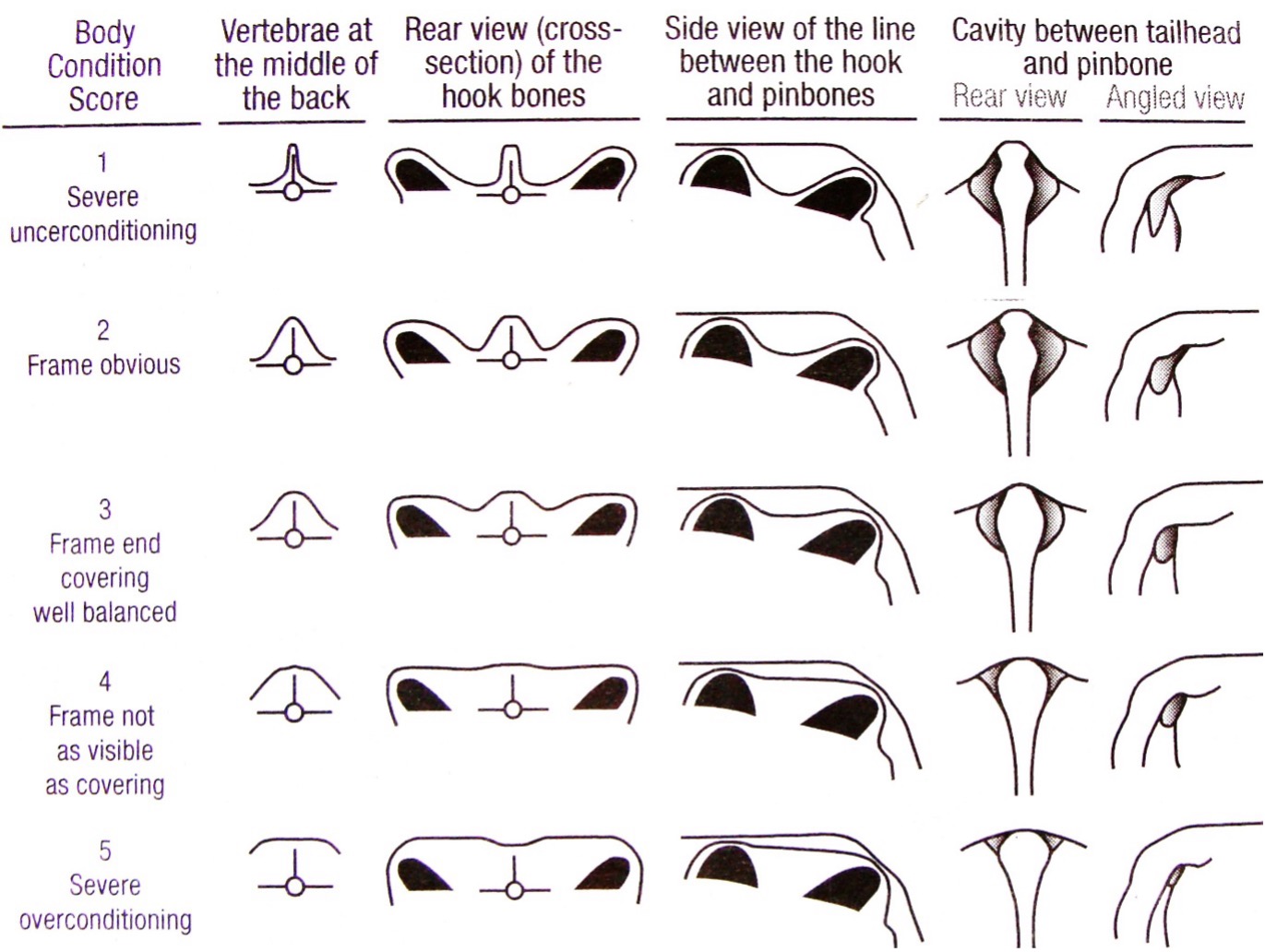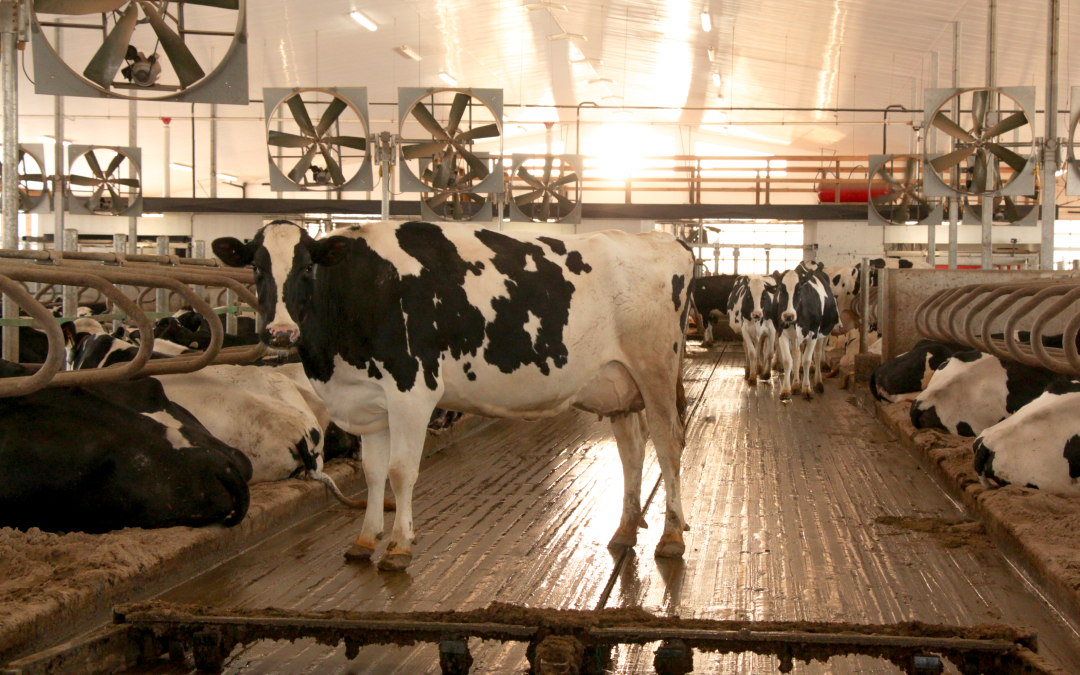Ruminant Nutritionist
Grand Valley Fortifiers
The goal for producers is to have a cow produce a healthy calf, while having an uneventful delivery, a smooth transition period, and a timely pregnancy following the voluntary waiting period. What can impact the success of this goal? The answer is complex due to the multiple factors influencing reproduction; however, a good place to start is the body condition score (BCS) of your cows. The longstanding belief has been that cows will “inevitably” lose BCS after calving due to the dramatic increase in energy demands from lactation and the reduction in feed intake, resulting in a negative energy balance. However, we now know that not all cows lose condition after calving, and many cows maintain or even gain condition. Changes in BCS have been associated with health status, how well cows transition, and fertility. So, what happens if we narrow our focus to the change in BCS during the transition period? This change in BCS in the transition period is what the High Fertility Cycle focuses on. The High Fertility Cycle is a concept that describes how timely pregnancies in one lactation may reduced early pregnancy losses in the next lactation (Fricke et al., 2023). Figure 1 provides a clear visual representation of the feedback loop that makes up this cycle.
The goal for every producer should be to get their cows into this High Fertility Cycle and
keep them there. The High Fertility Cycle stems from changes in BCS during the
transition period. When cows lose condition in the first few weeks post-
calving, they have reduced fertility, more health events, longer
calving intervals, and then calve in with a high BCS and are
susceptible to increased BCS loss the following lactation
as well. This puts them in a cycle of poor reproduction.
In contrast, cows that maintain or gain body condition
– also known as high fertility cows have been
associated with greater conception rates,
less pregnancy loss, and fewer health events.
Calving cows in at a suboptimal BCS doesn’t just impact
that lactation: it carries over into the next, as they will struggle
to get pregnant and ultimately gain more body condition than
recommended prior to calving again. The High Fertility Cycle takes times
to get your cows into, as it takes entire lactations to see the impact from one
lactation to the next. However, once your cows are in this cycle, they will be set with
optimal body condition and health status to stay in it.

How to get into the High Fertility Cycle
As described above, getting your cows into the High Fertility Cycle takes time, since what happens in one lactation will ultimately set her up for the next. However, you can take steps to move in that direction. Here are some suggestions for actions you can take to get your cows into the High Fertility Cycle:
-
- Monitor BCS for transition cows (3 weeks before calving, at calving, 3 weeks post-calving, and at insemination).
› Aim to have cows to calves at a BCS of ≤ 3.0 (Refer to Figure 2 for tips to body condition score). - Look at fat-to-protein ratios at the first milk test to identify signs of ketosis or fat mobilization (i.e. cows losing weight).
› Ratio >1.5 may indicate ketosis and fat mobilization.
› If >40% of fresh cows are having a high fat-to-protein ratio, this suggests changes are required and cows are not at optimal condition at calving. - Implement a structured fertility program (eg. Double-Ovsynch) to improve the chances of cows getting pregnant after the voluntary waiting period and by 130 days in milk.
- Avoid overbreeding cows. Set a limit on the number of inseminations and consider culling the cows struggling with fertility.
› Extending the days in milk before they conceive can result in cows becoming over conditioned. - Explore nutritional strategies to prevent late lactation cows from gaining too much condition.
- Consider adopting a high-producing or fresh group ration to support BCS gain in early lactation.
- Monitor BCS for transition cows (3 weeks before calving, at calving, 3 weeks post-calving, and at insemination).

Figure 2: Body Condition Scoring Chart, where 1 is severely underconditioned and 5 is obese (Adapted from Edmondson et al., 1989)
Rethinking BCS Goals
Remember, with the negative relationship between BCS loss and fertility becoming clearer, you may catch yourself thinking your dry cows are too thin. However, when cows calve in at a higher body condition (fat), they will lose condition post-calving, which negatively impacts their reproduction and health status. When cows calve thinner (2.7-3 BCS), they tend to maintain or gain condition, supporting their reproduction and health status, and ultimately becoming high fertility cows. A byproduct of the High Fertility Cycle is that you may find you are drying cows off while they are still producing a good amount of milk. This is actually a good problem to have! It indicates that you’re getting cows into this cycle, they aren’t having long calving intervals, and there is less opportunity for them to gain excess condition before their next lactation. Implementing good breeding programs and working towards the High Fertility Cycle will ultimately help improve your reproduction and cow health.
This article was written for the Summer 2025 Dairy Grist. To read the whole Dairy Grist, click the button below.
This article was also written for the Summer 2025 Western Dairy Grist. To read the whole Western Dairy Grist, click the button below.

